The connections between creativity and conservation run deep. The Mohawk Hudson Land Conservancy (MHLC) was founded in 1992 to protect the natural, scenic, agricultural, and cultural landscapes of the Mohawk and Hudson river valleys. We protect natural resources, working farmlands, air and water quality, and climate-resilient landscapes. Yet there are other benefits, less tangible but equally significant, which these spaces provide: and these benefits connect us with the creative communities in our service area.
These forests, fields, mountains, and rivers are not only ecologically and economically valuable; they are beautiful, and there is value in that beauty. From the vistas of the towering Helderberg Escarpment south of Albany to the rolling farmlands of Montgomery County, these undeveloped lands inspire reflection, creativity, and a palpable connection to the natural world.
Tens of thousands of visitors enjoy 2,000 acres and over 36 miles of trails at our 18 public nature preserves every year. We continue to find that these visitors receive a creative boost from their time outside. A walk in the woods, an afternoon sitting by a stream, a morning trail run… these are experiences to be shared, cherished, and protected. Without the natural world made available to the public, the constant thrum of development in our region will continue to take away our opportunities to experience, draw inspiration from, and find solace in nature.
As MHLC provides natural experiences for our community, many of our partners provide artistic, cultural, and musical experiences. Last June, we collaborated with the brass musicians of the Albany Symphony for an al fresco Celebration of Music and Nature in Rensselaerville. Our plein air painting classes led by art educators have been a powerful opportunity for local painters to find inspiration from the sights and sounds of our preserves. Our Family Wilderness Crafts workshops with Ondatra Adventures encourage young people to use their hands, engaging with the natural world and with their own creative spirit.
Our volunteer Art on the Rail Trail (ART) committee has been an incredibly successful creative endeavor. This dedicated group of neighbors began fundraising and installing public pieces of art along the Albany County Helderberg-Hudson Rail Trail in 2017. Vibrant pieces by local artists Andrea Hersh and John DeMarco have been installed, and the committee is already seeking proposals for a third mural. This volunteer committee encourages local artists to connect their art to the landscape, encouraging a community sense of ownership and pride for the Rail Trail.
These connections between local landscapes and the local creative economy continue to develop and deepen. Earlier this year, at MHLC’s 2018 Annual Awards Dinner, guest speaker Elizabeth Sobol, President and CEO of the Saratoga Performing Arts Center, spoke of the ties between conservation and the arts, and encouraged the audience to work together to cherish, preserve, and protect beauty in all of its forms. Ms. Sobol declared, “It is at that moment of shared beauty – birdsong, sunset, Mahler, Bach – that we are most utterly – and most fully – human. This, ladies and gentlemen, is what we are here to preserve and protect.”
Our staff and Board of Directors are continuing to follow these moments of shared beauty, these connections between nature and art, as we strive to foster a deep connection between residents of the Capital Region and nature. By creating outdoor experiences, and by encouraging a creative engagement with our local landscape, we can create a sense of place. This sense of connection to the farmlands, the river valleys, the hill tops, and the forests of the Capital Region will help us love, cherish, and protect the open spaces of our home.
Join the Mohawk Hudson Land Conservancy, Upstate Alliance for the Creative Economy, Indian Ladder Farms Cidery and Brewery, and other community partners for a Creative Economy Mixer on September 5. Indian Ladder Farms was protected by the Mohawk Hudson Land Conservancy through a conservation easement in 2003.
We’ll enjoy tours and tastings of their amazing cider and beer and learn more about the creative collaborations and networks that make our rural regions work and connect us with our natural world.
Guest post by Daron Blake, Communications and Outreach Coordinator for the Mohawk Hudson Land Conservancy
[/cs_text][/cs_column][/cs_row][/cs_section][/cs_content]
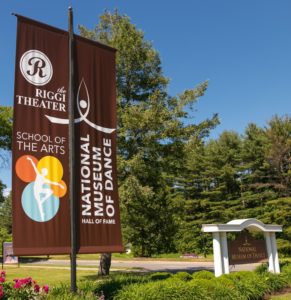
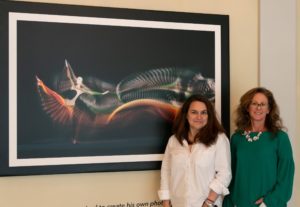 We visited with Museum Director Laura DiRado and Curatorial Associate Lisa Kolosek ahead of the July 11 ACE Mixer at the Museum to give Alliance members an inside look at how to balance creativity and business restrictions to maximize the visitor experience. Interestingly, neither Laura nor Lisa had a dance background prior to joining the Museum staff: Laura for many years worked as a freelance graphic designer with a focus on interpretive site design for the National Forest Service and other clients before taking on her roles at the Museum, first as Exhibition Coordinator and Designer and most recently as Director; while Lisa is an art historian and writer with a Master’s degree in the History of Design and Curatorial Studies.
We visited with Museum Director Laura DiRado and Curatorial Associate Lisa Kolosek ahead of the July 11 ACE Mixer at the Museum to give Alliance members an inside look at how to balance creativity and business restrictions to maximize the visitor experience. Interestingly, neither Laura nor Lisa had a dance background prior to joining the Museum staff: Laura for many years worked as a freelance graphic designer with a focus on interpretive site design for the National Forest Service and other clients before taking on her roles at the Museum, first as Exhibition Coordinator and Designer and most recently as Director; while Lisa is an art historian and writer with a Master’s degree in the History of Design and Curatorial Studies.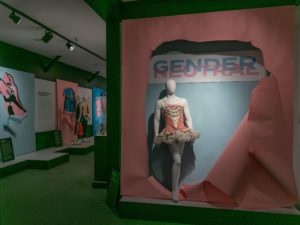 What would you share with Creatives about working at the Dance Museum?
What would you share with Creatives about working at the Dance Museum?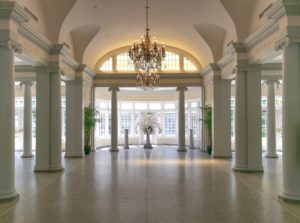 Does reporting to a Board of Directors and being on State property have an impact on the creative process?
Does reporting to a Board of Directors and being on State property have an impact on the creative process?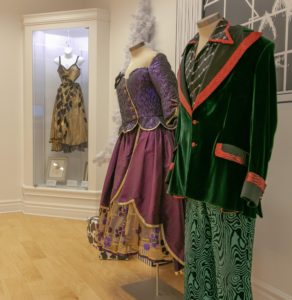 Since you had no dance affiliations, how did your background and experience help make you successful at the Museum?
Since you had no dance affiliations, how did your background and experience help make you successful at the Museum?